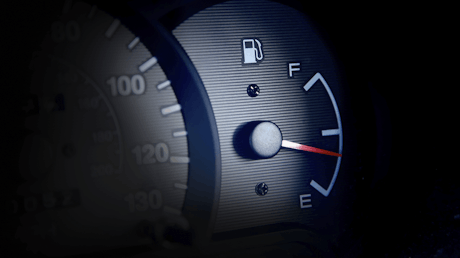What is MPG in cars?
January 04, 2022 by Ryan Hirons

When you’re buying or shopping around for a car, you’ll likely come across references to MPG. But what is MPG? And how much should you base your car buying decision on it?
MPG meaning
MPG stands for miles per gallon and is used to show how far your car can travel for every gallon (or 4.55 litres) of fuel it uses. For example, if you own a car that returns 50mpg and its fuel tank only has one gallon of petrol or diesel in it, you’ll drive 50 miles before the car runs out of fuel.
How to work out MPG
Official fuel economy figures are calculated based on WLTP testing (which stands for Worldwide Harmonised Light Vehicle Test Procedure).
This is conducted in a lab to simulate real-world driving scenarios. If you’re interested in finding out the exact MPG your current car is achieving, the vast majority of new cars will give you a readout of its current MPG on the driver’s display or central infotainment system.
Why does every car have multiple MPG figures?
WLTP tests are conducted in different ‘phases’ to simulate specific types of driving. Each phase gets its own stated figure, with a final ‘combined’ figure providing an average across all scenarios. This is the figure you’ll most likely see advertised.
- Low – simulates driving in urban areas at speeds up to 56.5km/h (about 35mph)
- Medium – simulates driving in suburban areas at speeds up to 76.6km/h (about 48mph)
- High speed – simulates driving in rural areas at speeds up to 97.4km/h (about 61mph)
- Extra high – simulates driving on motorways at speeds up to 131.3km/h (about 82mph)
- Combined – a mixture of the above. This is the figure usually most prominent in advertising.
Sounds simple enough, right? Well, there’s more. You might see a range of ‘combined’ WLTP figures provided for each car – even those that only come with one choice of engine. This is because fuel economy (and the WLTP test results) can be affected by specific extras fitted to some cars.
For instance, fuel economy often gets worse if you fit your car with larger optional wheels, as they tend to be heavier, generate more aerodynamic drag and have more rolling resistance (the friction generated as the tyre rolls on the road) than the wheels that came as standard.
Are MPG figures realistic?
While the WLTP tests have been designed to be reflective of real-world driving, they are still carried out exclusively in a lab. As a result, you may still struggle to match your car’s quoted MPG figures while you’re behind the wheel.
Therefore, it’s best to use the MPG figures for comparison between cars, and not as a surefire guarantee of the fuel economy your car will be capable of in day-to-day driving.
This can especially be the case if you drive a plug-in hybrid (PHEV) car. Because PHEVs can be driven for short distances on electric power alone (meaning their engines aren’t running for the entire duration of the test), their official economy figures are often difficult to replicate.

Why is a car’s MPG important?
A higher MPG means less fuel is consumed as you’re driving. That means it’ll cost you less to run and (generally speaking) meaning your car is producing fewer emissions as it burns fuel more efficiently.
If you’re looking to improve your own MPG, you can influence it with a few changes to your driving habits. Smoother acceleration and braking will help you get that figure up, for example.
What is my car’s MPG?
If you want to see your car’s own officially-claimed MPG, a brochure of your model should provide the answer.
As mentioned earlier, most cars now will give you a readout of the MPG you’re really achieving, too.
If you want to work it out yourself, make a note of the miles you’ve covered on a full tank of fuel and divide that by the number of gallons it takes to refill your tank.
This won’t be an exact science though — unless you drive your car from the absolute brim of the tank to empty.
FAQs: Miles per gallon (MPG)
What is a good MPG?
A good MPG is subjective depending on the car and fuel type, but it’s always the case that the higher the number, the better.
Is a higher MPG better?
A higher MPG means your car is consuming less fuel as you’re driving. Therefore, the bigger the number, the better.
Can my driving style affect my car’s MPG?
Your driving style can have a huge impact on your MPG. Smoother driving tends to lead to a higher figure, while jerky reactions and aggressive acceleration will see it drop.
I’ve also seen l/100km used. What does that mean?
Litres per 100km (l/100km) is the European standard for fuel consumption. It’s almost a reverse of MPG — the lower the number is better in this case.
For example, 1mpg is approximately the equivalent of 282.48 l/100km, with 1 l/100km the equivalent to 282mpg. A car achieving 40mpg would return about 7.06 l/100km.